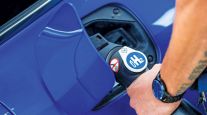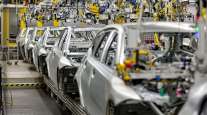Saving the Planet With Electric Vehicles Means Strangling This Desert
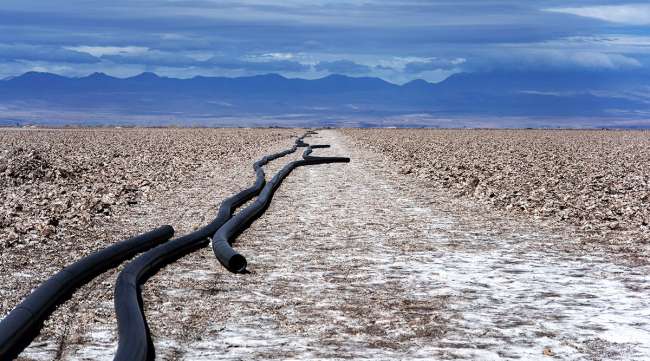
[Stay on top of transportation news: Get TTNews in your inbox.]
The oases that once interrupted the dusty slopes of the Atacama desert in northern Chile allowed humans and animals to survive for thousands of years in the world’s driest climate. That was before the mining started.
Sara Plaza, 67, can still remember guiding her family’s sheep along an ancient Inca trail running between wells and pastures. Today she is watching an engine pump fresh water from beneath the mostly dry Tilopozo meadow. “Now mining companies are taking the water,” she says, pointing to dead grass around stone ruins that once provided a nighttime refuge for shepherds.
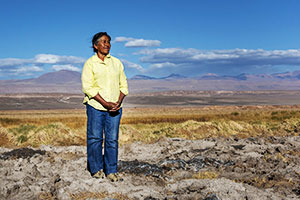
Sara Plaza stands on the dry meadow where her family’s flock of sheep used to feed during winter months. (Cristobal Olivares/Bloomberg News)
“No one comes here anymore, because there’s not enough grass for the animals,” Plaza says. “But when I was a kid, there was so much water you could mistake this whole area for the sea.”
Atacama has become one of the busiest mining districts on the planet in the intervening decades, following discoveries of massive deposits of copper and lithium. In recent years that mining has intensified, thanks to booming demand for lithium, which is indispensable in the production of rechargeable batteries for electric vehicles. Chile exported nearly $1 billion of lithium last year, almost quadruple the export value from four years ago.
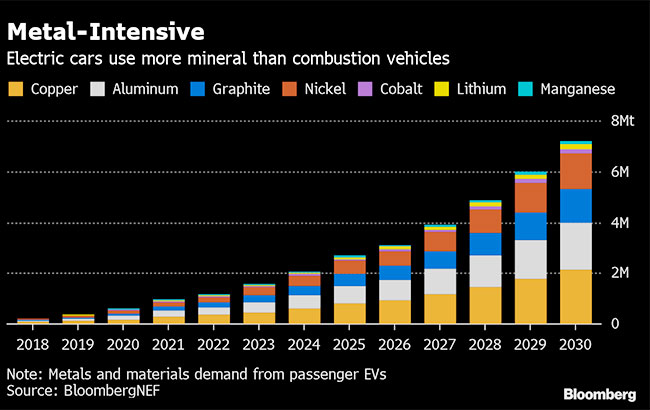
Pursuit of the soft mineral is often seen as something that’s good for the environment. Electric automakers such as Tesla Inc. want to make it easier and cheaper for drivers to adopt clean, battery-powered replacements for dirty combustion engines. Batteries are by far the most expensive part of an electric vehicle, so mining more lithium to meet rising demand helps lower prices. Putting more electric cars on the road is one of the most powerful ways to mitigate the effects of climate change, reducing the 15.6% of global carbon emissions that come from transportation.
But extracting Atacama’s lithium means pumping large amounts of water and churning up salty mud known as brine — and that’s having an irreversible impact on the local environment. Here, in this remote part of the Andes, the hopeful mission of saving the planet through electric cars is destroying a fragile ecosystem and depleting stores of drinking water.
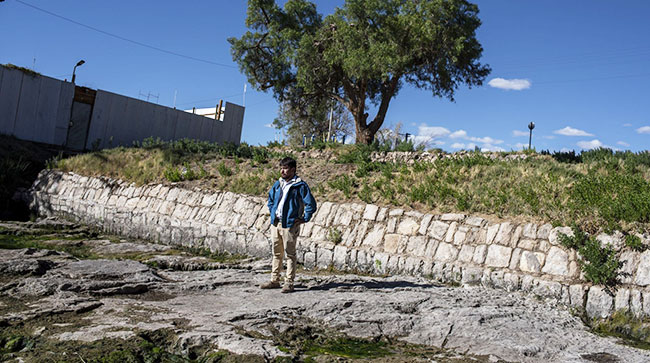
Sergio Cubillos, president of Atacama People’s Council, stands on an empty water tank at the village of Peine. (Cristobal Olivares/Bloomberg News)
“We’re fooling ourselves if we call this sustainable and green mining,” says Cristina Dorador, a Chilean biologist who studies microbial life in the Atacama desert. “The lithium fever should slow down because it’s directly damaging salt flats, the ecosystem and local communities.”
Lithium mining’s crown jewel is a vast salt flat 10 times as big as New York’s Central Park. To get the minerals out requires working at an elevation about 6,500 feet above sea level. The otherworldly desert landscape is dotted with shallow lagoons in which flamingos nest amid an enclosure of volcanoes and mountains. The stunning geography is akin to a gigantic bowl.
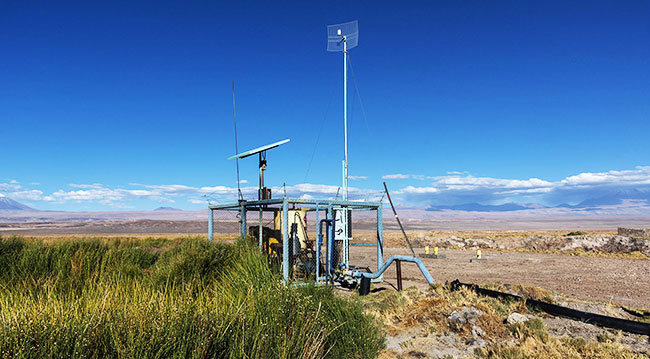
A fuel engine pumps water from the Tilopozo well in the southern tip of the Atacama salt flat. (Cristobal Olivares/Bloomberg News)
BHP has vowed to completely stop using fresh water in Chile by 2030 and has so far invested $4 billion in desalination plants. But the company is now requesting an extension of its water rights from 2020 to 2030, promising to cut the pumping rate to 640 liters per second. Monitoring hasn’t shown environmental changes different from those anticipated under existing permits, a company official said in an e-mail. Antofagasta’s Zaldivar copper mine is also seeking a new license to pump 213 liters per second through 2029; the company wasn’t immediately available for comment.
The huge increase in lithium demand is drawing additional mining companies into the Atacama and other salt flats in the Andes. About 40% of Chile’s salt flats are now being explored for lithium, according to Dorador, the scientist. If the current way of mining continues, she warns, there’s a risk that the salt flats will run out of water.
This could be the ultimate irony of the green revolution spurring demand for electric vehicles and batteries made from lithium. Scientists have come to view the fragile environment of Atacama as key to understanding the origins of life and the effects of climate change. Millions of years ago, the salt flat was a lake that has been slowly drying up, a process similar to what could happen elsewhere around the planet as temperatures rise.
“It is a picture of how our lakes will look like in the future,” Dorador says. To her, pumping water out of this dying ecosystem means taking away its last breath before scientists have had the chance to fully understand it.




